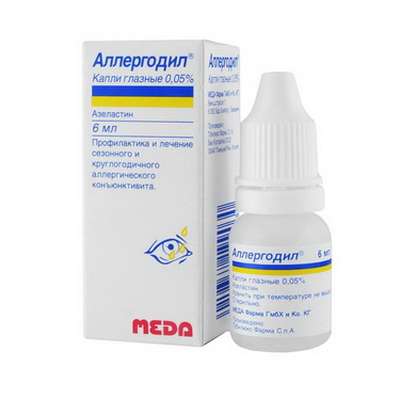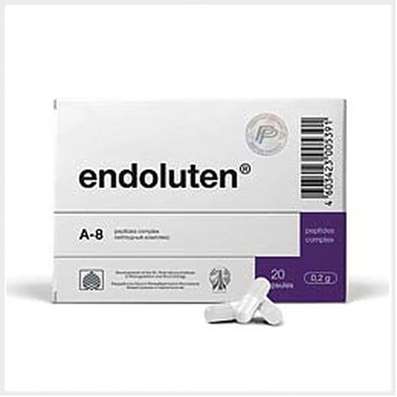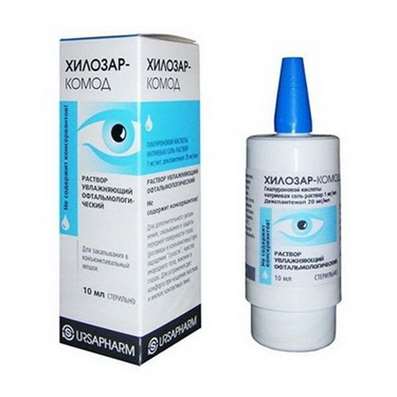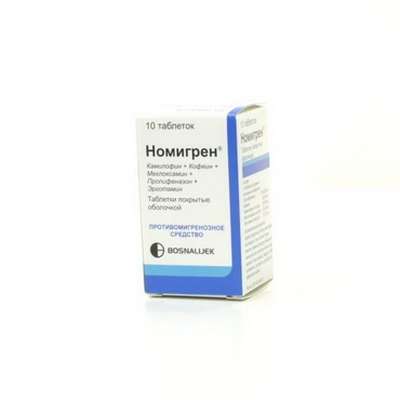Instruction for use: Nicergoline
I want this, give me price
Trade name of the drug – Nicergoline
Active substance: Nicergolinum
Dosage Form: The porous mass or powder white and odorless.
Composition (per tablet): nicergoline - 4 mg
Excipients: tartaric acid - 1,04 mg; Lactose monohydrate (milk sugar) - 30 mg.
4 mg in ampoules made of neutral glass ampoules 5 in blisters of PVC membrane.
5 ml of solvent - Sodium chloride 0.9% for injection in ampoules made of neutral glass ampoules 5 in blisters of PVC film.
One contour cell package with the drug and one contour cell package with a solvent with lancet ampoule or ampoule ceramic abrasive and instructions for use are placed in a pile of cardboard.
When using vials with a point or ring fracture scarifier not invest.
Pharmacotherapeutic group:
ATXC04AE02 Nicergoline
The nosological classification (ICD-10)
F01 Vascular dementia: Cerebrovascular dementia
G44.1 Vascular headache, not elsewhere classified: Arteriogipotonichesky option headaches; Pain of vasogenic; Vasomotor headache; Headache vascular genesis; Headache vascular origin
G45 Transient transient cerebral ischemic attacks [attacks] and related syndromes: Ischemic neurological disorders; Acute cerebrovascular insufficiency; Repeated transient cerebral ischemia; Transient ischemic attack; Transient ischemic condition; Transient ischemic attack; Transient ischemic attack; transient ischemia; Transient cerebral ischemic attack; Transient cerebral ischemia; Transient ischemic attacks; Chronic cerebral ischemia; Drop attacks; Transient ischemic attacks; Transient ischemic cerebrovascular accident; Ischemic brain damage; Subclavian steal syndrome
I10 Essential (primary) hypertension: hypertension; Arterial hypertension; Arterial hypertension crisis course; Essential Hypertension; Essential hypertension; Essential hypertension; Essential hypertension; Essential hypertension; Primary hypertension; Arterial hypertension, complications of diabetes; The sudden increase in blood pressure; Hypertensive disorders of blood circulation; hypertensive condition; hypertensive crises; arterial Hypertension; malignant Hypertension; Hypertonic disease; hypertensive crises; accelerated hypertension; malignant hypertension; The aggravation of hypertensive disease; Transient hypertension; Isolated systolic hypertension
I15 Secondary hypertension: Arterial hypertension, complications of diabetes; hypertension; The sudden increase in blood pressure; Hypertensive disorders of blood circulation; hypertensive condition; hypertensive crises; hypertension; arterial Hypertension; malignant Hypertension; hypertensive crises; accelerated hypertension; malignant hypertension; The aggravation of hypertensive disease; Transient hypertension; hypertension; Arterial hypertension; Arterial hypertension crisis course; renovascular hypertension; Hypertension symptomatic; Renal hypertension; Renovascular hypertension; renovascular hypertension; Symptomatic hypertension
I15.0 Renovascular hypertension: hypertensive crisis; renovascular disease; accelerated hypertension; Isolated systolic hypertension
I66 Occlusion and stenosis of cerebral arteries, not resulting in cerebral infarction: Thrombosis of the cerebral vessels; Cerebral thrombosis; Thrombosis of the cerebral vessels; Thromboembolism; Thromboembolism cerebral vessels; Embolism of cerebral vessels; Cerebral embolism; Thrombosis of cerebral arteries; Thrombosis of the renal artery
I66.9 Occlusion and stenosis of cerebral arteries, unspecified: Thrombosis of cerebral arteries; Thrombosis of the cerebral vessels; Cerebral thrombosis; Thrombosis of the cerebral vessels; Thromboembolism cerebral vessels; Embolism of cerebral vessels; Cerebral embolism; Stenosis of cerebral arteries
I67.2 Cerebral atherosclerosis: Atherosclerosis of the arteries of the brain; Atherosclerosis of cerebral vessels; Atherosclerotic changes in cerebral vessels; Vascular diseases of the brain; Sclerotic ischemic attacks; Sclerosis of cerebral vessels
I67.9 Cerebrovascular disease, unspecified: lacunarity status; Angioneyropatiya; Arterial angiopathy; brain hypoxia; Encephalopathy; cerebral vascular disease and age-related; Coma in violation of cerebral circulation; Metabolic and cerebrovascular disorders; Violation of the blood supply to the brain; Cerebrovascular accidents; Violation of brain functions; Violation of the functions of the cerebral cortex; Violation of cerebral circulation; Cerebrovascular insufficiency; Acute cerebrovascular insufficiency; Acute ischemic attack; The defeat of the brain vessels; The progression of destructive changes in the brain; Disorders of cerebral circulation; The syndrome of cerebral insufficiency; Cerebral vascular insufficiency; Vascular encephalopathy; Vascular diseases of the brain; Vascular brain disorders; Vascular lesions of the brain; Functional brain disorders; Chronic cerebral ischemia; Chronic heart failure; Chronic cerebrovascular insufficiency; Chronic cerebrovascular insufficiency; Chronic violation of the blood supply to the brain; Cerebral insufficiency; Cerebral organic failure; encephalasthenia; cerebroasthenic syndrome; Cerebrovascular disease; Cerebrovascular pathology; cerebrovascular disease; cerebrovascular disorders; cerebrovascular disorders; Encephalopathy discirculatory
I73 Other peripheral vascular disease: peripheral angiopathy; limb arteriopathy; The disease of arteries; Violations of peripheral arterial circulation; Lack of blood flow arteriovenous; Obliterating diseases of arteries; occlusive disease; Occlusive disease with severe intermittent claudication; obliterating diseases of arteries; Chronic obliterating peripheral arterial disease; endarteritis obliterans; Ischemic lesions stop
I73.0 Raynaud's Syndrome: Raynaud's syndrome Leriche; Raynaud's disease; Raynaud's phenomenon; RaynaudLeriche syndrome; Raynaud's disease; Raynaud's syndrome with trophic disorders; Peripheral angiopathy
I73.9 Peripheral vascular disease, unspecified: angiospasm; Vasospasm / vasoconstriction; vasospastic disorders; Violation of venous microcirculation; Violation of circulation; Violation of peripheral blood circulation; of peripheral blood circulation in the lower and upper limbs; Peripheral arterial occlusive disease; Peripheral arterial occlusive disease in stages III-IV on Fontaine; Peripheral vascular insufficiency; Peripheral vascular lesions; Peripheral vascular disorders; Peripheral circulatory disorder; spasm of artery; angiospasm; Functional peripheral arterial disease; Chronic occlusive disease; Chronic obliterating diseases of the lower limbs; Chronic arterial occlusive disease
I79.2 Peripheral angiopathy in diseases classified elsewhere: diabetic angiopathy; Angiopathy in diabetes; arteriosclerosis diabetic; Pain in lesions of peripheral nerves; Diabetic angiopathy; Diabetic microangiopathy; Diabetic vascular disease; Intermittent angioneurotic disbaziya; Macroangiopathy in diabetes; microangiopathy; Microangiopathy in diabetes mellitus; Tingling sensations in the hands and feet; Coldness in the extremities; Peripheral angiopathy; Peripheral arterial disease; Sclerosis Menkeberga; Chronic obliterating diseases of arteries
Pharmacological Properties of Nicergoline
Pharmachologic effect - Mode of action - vasodilator.
Pharmacodynamics
Nicergoline - ergoline derivative - improves metabolic and hemodynamic processes in the brain, reduces platelet aggregation and improves hemorheological parameters of blood, increases the rate of blood flow in the upper and lower limbs, showing alpha1-adrenoceptor blocking action. In patients with hypertension can cause a gradual moderate pressure.
Pharmacokinetics
Major metabolites nicergoline: 1,6-dimethyl-8β-hydroxymethyl-10α-metoksiergolin (MMDL, hydrolysis product) and 6-methyl-8β-hydroxymethyl-10α-metoksiergolin (MDL, dimethylation product under the action of CYP2D6). Nicergoline active (> 90%) binds to plasma proteins, and its degree of affinity for the alpha 1-acid glycoprotein more than serum albumin. It is shown that nicergoline and its metabolites are distributed in blood cells. Pharmacokinetics of nicergoline is linear and does not vary depending on the age of the patient. Nicergoline is displayed in the form of metabolites, mainly by the kidneys (approximately 80% of the total dose) in a small amount (10-20%) - via the intestine. In patients with severe renal failure showed a significant reduction in the degree of removal of metabolic products in the urine as compared to patients with normal renal function.
Indications for Nicergoline
acute and chronic cerebral metabolic and vascular disorders (due to atherosclerosis, hypertension, thrombosis or cerebral embolism, including transient ischemic attack, vascular dementia, and headache caused by vasospasm);
acute and chronic peripheral metabolic and vascular disorders (organic and functional limb arteriopathy, Raynaud's disease, syndromes, peripheral blood flow caused by infringement);
as an adjunct in the treatment of hypertensive crises.
Contraindications for Nicergoline
increased sensitivity to nicergoline or other ingredients;
recent myocardial infarction;
bleeding;
bradycardia;
orthostatic hypotension;
galactose intolerance;
lactose deficiency or glucose-galactose malabsorption;
pregnancy;
breast-feeding;
Children up to age 18 years (due to lack of data).
Be wary - hyperuricemia and gout history in combination with drugs that disrupt metabolism or excretion of uric acid.
Nicergoline Dosage and Administration
Intramusculary, previously dissolved in the supplied sodium chloride 0.9%, 2 mg 2-4 times a day.
The dose, duration of therapy depends on the nature of the disease.
Patients with impaired renal function (serum creatinine ≥2 mg / dL) is recommended for lower therapeutic doses.
Side effect of Nicergoline
The marked decrease in blood pressure, dizziness, diarrhea disorders (nausea, diarrhea, abdominal pain), feeling of fever, allergic reactions, sleepiness or insomnia. May increase the concentration of uric acid in the blood, and this effect is independent of dose and duration of therapy.
Overdose of Nicergoline
Symptoms: increased severity of side effects, except for the allergic reactions.
Treatment: symptomatic therapy.
Interaction
It enhances the effect of antihypertensive drugs. Nicergoline is metabolized by the action of CYP2D6, so we cannot exclude the possibility of interaction with drugs that are metabolized with the participation of the same enzyme.
SPECIAL INSTRUCTIONS for Nicergoline
After introduction of nicergoline recommended patients be in a horizontal position for several minutes after injection, especially at the beginning of treatment, due to possible orthostatic hypotension.
Effects on ability to drive and use other mechanisms
Despite the fact that nicergoline improves reaction and concentration, its effect on the ability to drive and use sophisticated techniques not specifically studied. In any case, the period of treatment should refrain from driving motor vehicles and activities potentially hazardous activities that require high concentration and psychomotor speed reactions.
Storage conditions of Nicergoline
In the dark place at a temperature of 2-10 ° C.
Keep out of the reach of children.
Shelf life
3 years.
Do not use beyond the expiration date printed on the package.
Conditions of supply of pharmacies
On prescription.

 Cart
Cart





